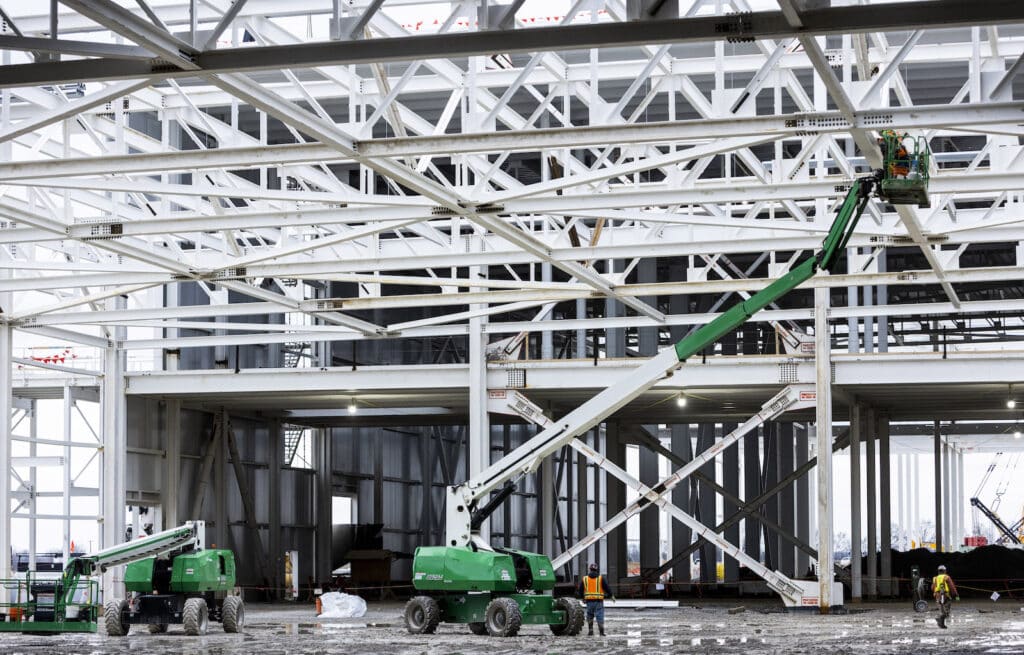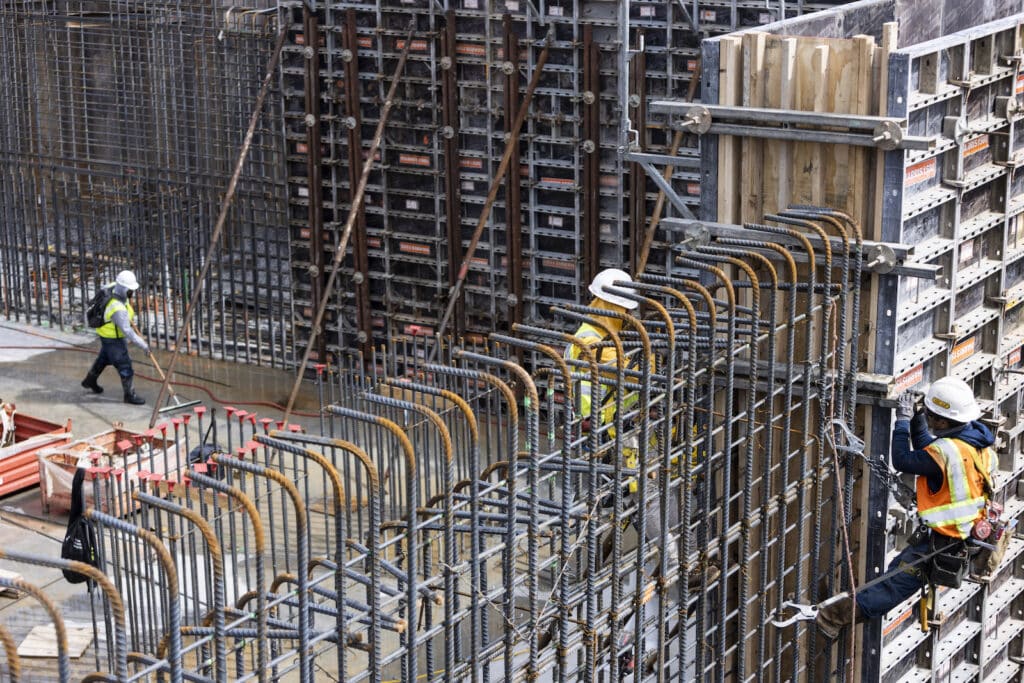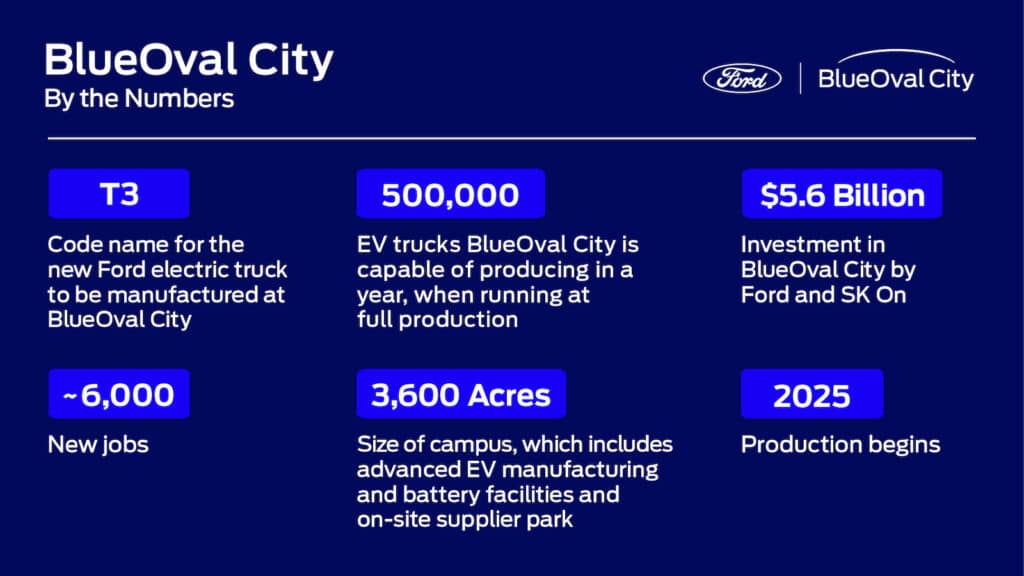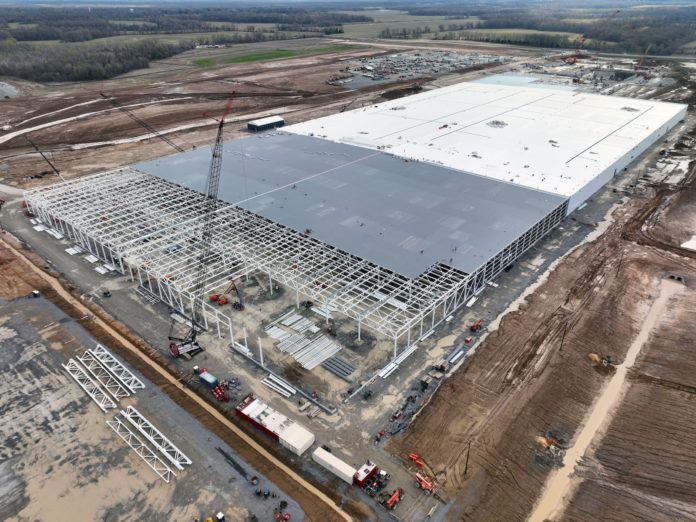Ford Motor Co.’s push to its electric future marched forward Friday, after it revealed plans to build an all-new, all-electric pickup, dubbed Project T3, at its BlueOval City site starting in 2025.
The company plans to build 500,000 of the new pickups annually at the plant, developed at the same time as the new pickup. The move to design the truck and the plant that will produce it is a new approach for the century-plus-year-old automaker — and it represents significant change and improvement.
“Project T3 is a once-in-a-lifetime opportunity to revolutionize America’s truck. We are melding 100 years of Ford truck know-how with world-class electric vehicle, software and aerodynamics talent. It will be a platform for endless innovation and capability,” said Jim Farley, Ford president and CEO.
“PJ O’Rourke once described American pickups as ‘a back porch with an engine attached.’ Well, this new truck is going to be like the Millennium Falcon — with a back porch attached.”
Everything old is new again

“The manufacturing process will be equally breakthrough, with radical simplicity, cost efficiency and quality technology that will make BlueOval City the modern-day equivalent of Henry Ford’s Rouge factory. A factory of the future that people from all over the world will want to tour,” Farley said.
The company broke ground last September on the 3,600-acre site near Memphis, and has been making steady progress. However, exactly what was going to be build first hasn’t been clarified — until now. It was assumed a new truck would be built there as well as other EVs.
The peculiar nickname for the new truck, Project T3, came from organic beginnings, officials noted. It’s short for “Trust The Truck,” which stuck after the pickup’s development team members made it their rallying cry. The team’s single guiding principle has been to create a truck people can trust in the digital age — fully updatable, constantly improving, and supports towing, hauling, exportable power and endless new innovations owners will want, the company said.

When it opens in 2025, it will produce electric vehicles including the next-generation Ford F-150 Lightning. The complex also will feature a battery plant capable of rolling out enough batteries to power up nearly 400,000 vehicles like the Lightning pickup. And it will add a battery recycling facility, as well.
BlueOval City also is a key part of Ford’s plan to scale EV production. Together with its South Korean battery partner SK Innovation, it will invest a combined $11.4 billion to build both BlueOval City and an additional pair of battery plants in neighboring Kentucky. The Tennessee complex alone will come in around $5.6 billion, and it’s expected to employ 6,000 people when fully operational.
The company is targeting a production run rate of 600,000 EVs by the end of this year and 2 million EVs annually across the globe by late 2026. As part of that effort Ford’s also been expanding its new Rouge facility currently building the Ford F-150 Lightning. The second generation of that vehicle is reportedly going to be built at BlueOval City.
A new take for new times
Ford officials were quick to point out the significant advantages — financial and otherwise — that come with designing the vehicle and the plant that will build it at the same time. The company noted it can use a 30% smaller general assembly footprint than traditional plants while delivering higher production capacity.

“BlueOval City is the blueprint for Ford’s electric future around the world,” said Bill Ford, Ford’s executive chair. “We will build revolutionary electric vehicles at an advanced manufacturing site that works in harmony with the planet, aligning business growth and innovation with environmental progress.”
In addition to the smaller footprint for the manufacturing space, the assembly plant will use carbon-free electricity from the day it opens. For the first time in 120 years, Ford also is using recovered energy from the site’s utility infrastructure and geothermal system to provide carbon-free heat for the assembly plant — saving about 300 million cubic feet of natural gas typically needed each year to heat similarly sized vehicle assembly plants.
Officials claim the site will save 50 million gallons of water annually by reducing evaporation from the site’s cooling towers. In fact, it will never use any sort of freshwater for its assembly process and will be a zero-landfill-waste plant when it opens.
Ford also intends to develop a holistic stormwater management system separate from the water table to help protect the local environment.

